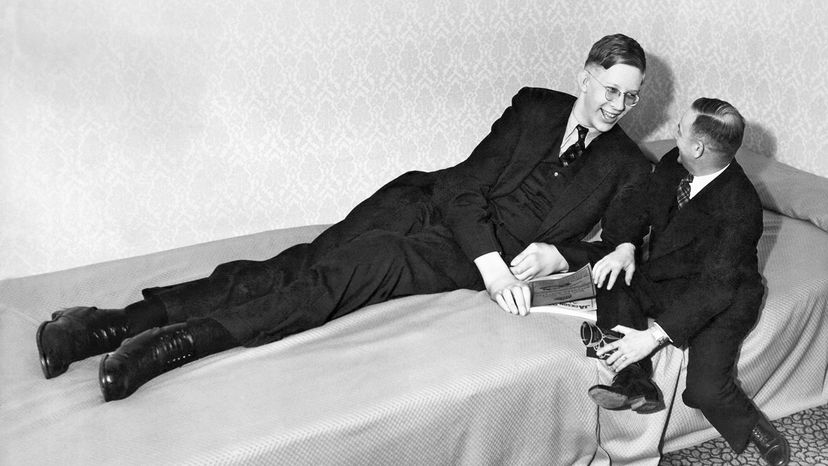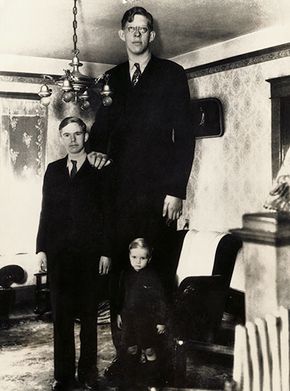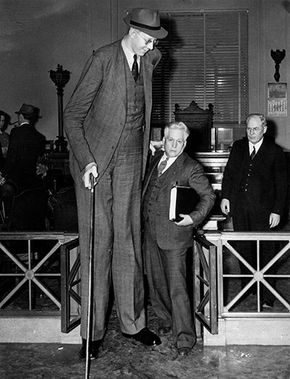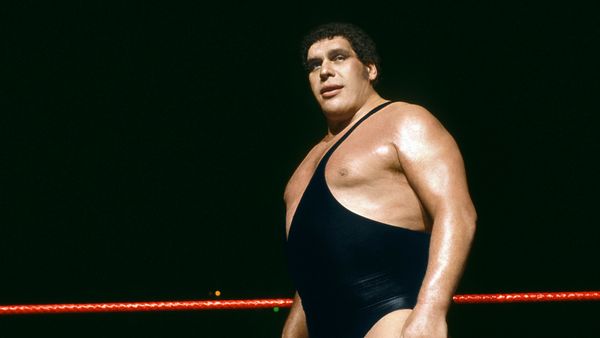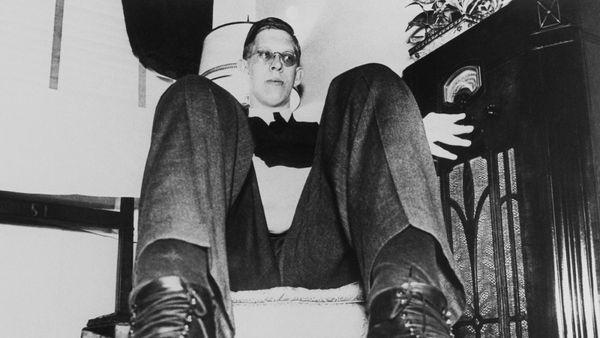Despite living in a supportive community, Wadlow's gigantism came with a huge set of physical and emotional challenges. "His size affected his everyday comfort and ability to navigate a physical world not made for him as he kept growing," said Phillips. "As he outgrew regular-sized adult clothes and furniture, custom items had to be crafted." Notably, his father had to customize the family car by taking out the front passenger seat, so that Wadlow could sit in the back seat and have legroom.
Wadlow's disease also got in the way of his professional aspirations. "As a young adult, he went to a local college [Shurtleff College] for a while with a goal of becoming a lawyer," Phillips said. "But his size proved too challenging as he tried to navigate the campus and classrooms."
Although he handled most of the challenges in stride, "I did find material indicating an example of things he found distressing were when people who came to see him at visits around the country poked his legs to see if they were real (thinking he might be on stilts)," Phillips noted.
These inconveniences paled compared to the physical toll of the disorder. He required 8,000 calories per day, as well as leg braces and a walking stick to support him. His body had a terrible time keeping up. "It affected his health toward the end of his life as his systems struggled to support his size," Phillips said. He had difficulty feeling his extremities, particularly his feet.
In fact, it was a badly fitted ankle brace that ultimately caused his death at age 22 in 1940. "His size compromised his ability to heal from injuries or illnesses," Phillips said. "An ankle brace he wore to provide stability rubbed a blister that became infected and his body could not fight off the infection." He had to be treated in a hotel room, since no hospital beds were big enough.
Several days later, Robert Wadlow died in his sleep. He was buried in Oakwood Cemetery in his hometown of Alton, in a 1,000-pound (454-kilogram) casket carried by 12 pallbearers and eight additional helpers. After his death, his family destroyed nearly all possessions, in order to prevent them falling into the hands of collectors who might display them as "freak show memorabilia."
Wadlow never married, and Phillips didn't find evidence that he had any romantic relationships; nevertheless, he was surrounded by love. "It seems that he had amazing social support and inclusion by his family and the Alton community," she notes. "This is not always the case for someone with differences, of course, and it helped him cope with his unique life and all of the external scrutiny."
In 1985, a life-size statue of Wadlow was erected opposite the Alton Museum of History and Art, located on the campus of the Southern Illinois University School of Dental Medicine, formerly known as Shurtleff College, which Wadlow attended.
